

Monte Albán's most famous sculpturesAbout 300 of these so-called Danzantes are known, about half of which were incorporated into the Temple of the Danzantes. Because some nineteenth century viewers saw these figures as swimming or dancing, they were called Danzantes (Dancers). But these bas relief nude male figures on large stone slabs are probably represented as dead. These are now viewed as the limp or distorted poses of the dead whose mouths are often open, whose eyes are closed, and whose genitals in some cases are mutilated with flowing blood in stylized patterns.The bas-relief slabs seem to be isolated, with no attempt to relate figures to each other. Although the poses and figures are different, most are shown with a frontal or three-quarter body and a profile head. All are worked in the same manner--a single incised line with emphasis on the contour. Some details are indicated: earplugs or other jewelry and variations in hair style and beard; some figures are clearly old. Their physical features have been compared to those of Olmec figures--short stature with chunky physiques, round heads and low broad foreheads, full lips, down-turned mouths, wide noses, and slanting eyes. Some have accompanying glyphs probably indicating names and an early numerical system using bars and dots.
| ||
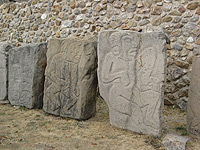
|

|
|

|
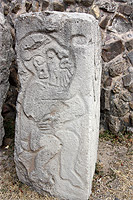
|
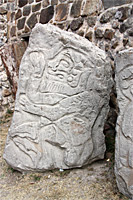
|
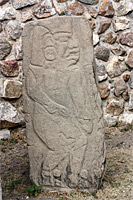
|
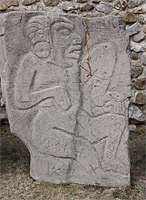
|
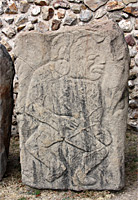
|
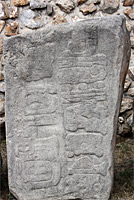
|
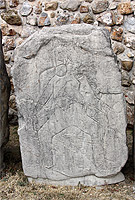
|
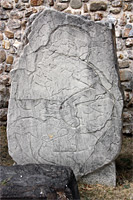
|
 Return to the Monte Albán Index.
Return to the Monte Albán Index.
 Go to the Mexico Index.
Go to the Mexico Index.
 Click here to return to index of art historical sites.
Click here to return to index of art historical sites.
 Click here to return to index of artists and architects.
Click here to return to index of artists and architects.
 Click here to return to chronological index.
Click here to return to chronological index.
 Click here to see the home page of Bluffton University.
Click here to see the home page of Bluffton University.

